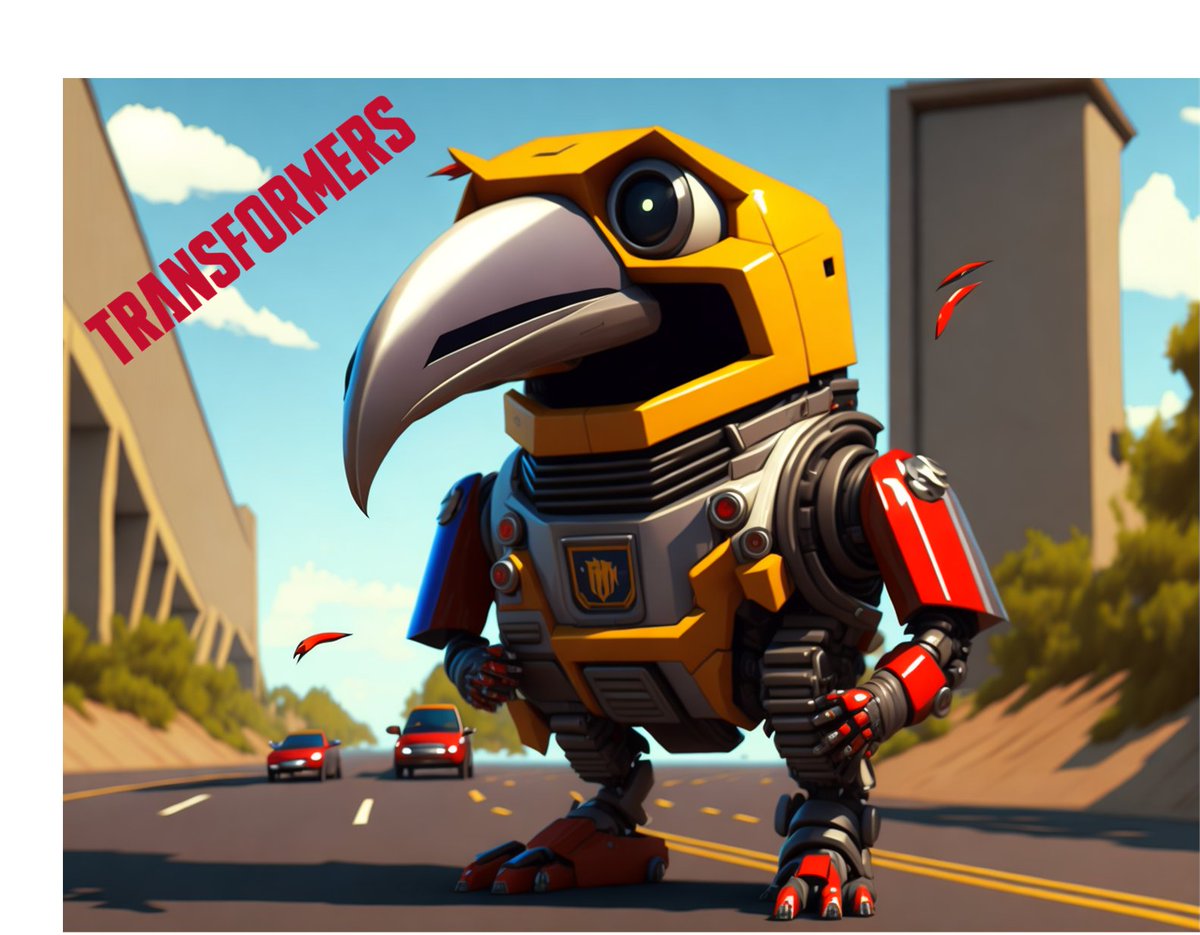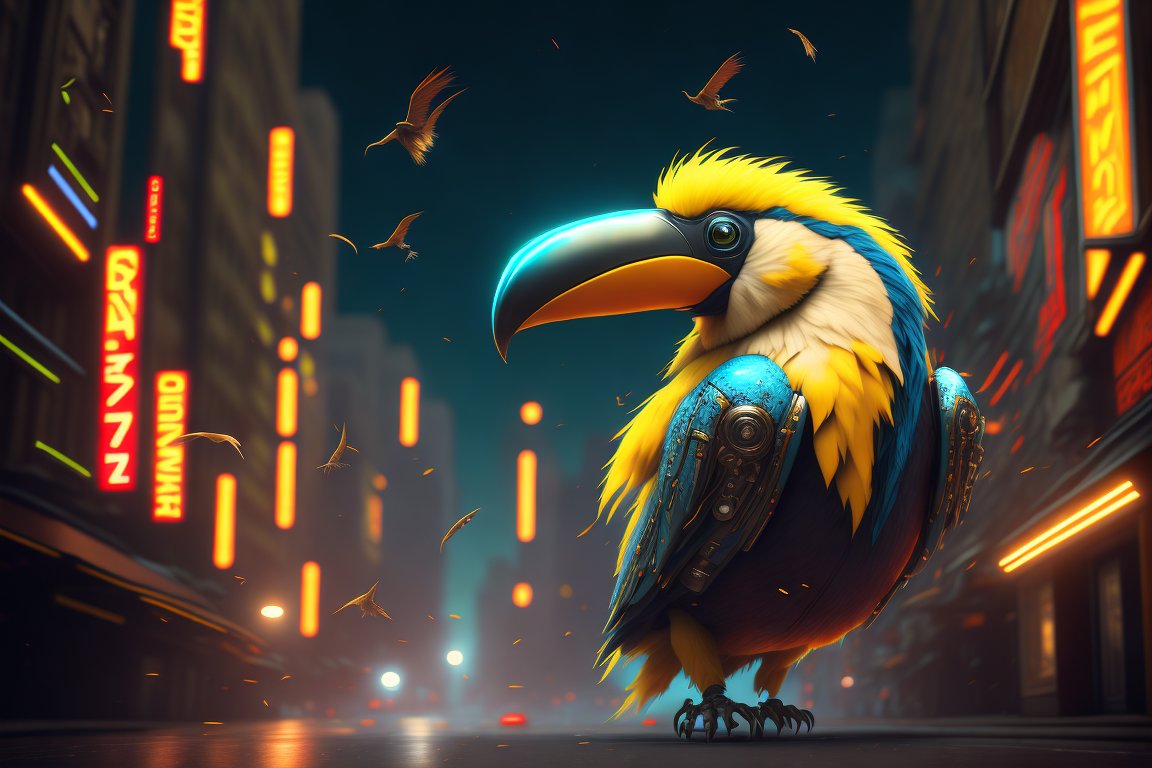Should you learn AI tools now and adopt them in your work / studies? A🧵with some thoughts on AI capabilities and the dark side of AI, visualized by AI generated robot toucans. 🧵1 

AI / deep learning has been around for some time, but really started to take flight (pun intended) around 2017. e.g. arxiv.org/abs/1704.01444 trained AI to predict characters in Amazon reviews, but also found an emergent property that the model performed sentiment analysis. 🧵2 

Around that time the transformer deep learning model was proposed, which now lies at the heart of many large language models (e.g., GPT-4) arxiv.org/abs/1706.03762 🧵3 

Now there are many different models and methods, some of which are publicly available. These contain billions of parameters and are trained on enormous datasets. The newest examples are GPT-4, Google Bard, Bing's chatbot, etcetera. They have all kinds of emergent properties. 🧵4 

They can be incredible useful and will mark a change in the world as big as internet itself. For example, I expect AI to revolutionize education, with lectures and classes replaced by AI tutors. You can already ask GPT-4 to be your personal tutor and it will work very well 🧵5 

For example, I made GPT-4 a tutor to teach me Singlish, a local unofficial language that combines many different languages, to help me navigate Singaporean food courts better. 🧵6 

Large language models will also greatly facilitate academics. For example, GPT-4 can already come up with experiments, improve your writing, come up with exams, write abstracts, generate slides, etcetera. And, yes, students can use it to cheat (though I don't recommend it) 🧵7 

But language is more than just written text. Everything is language. Sound is language, images are language, code is language, etcetera. The methods generalize to many applications to translate between all of these. For example, an AI made these based on "cute robot toucan" 🧵8 

In addition, you can also train AI yourself. For example, a technique called LoRA basically trains a little extension to a model. You can use it to create images of yourself, but in principle also to make large language models write in a certain style. arxiv.org/abs/2106.09685 🧵9 

So should you learn these methods? Eventually yes. But right now, I do see problems. (1) AI is still in infancy and nobody knows what it will look like in the future. You might spend time learning a workflow that will entirely change next year. also: journals.sagepub.com/doi/10.1177/25… 🧵10 

(2) there clearly are many unresolved legal issues. For example, if an AI can reproduce copyrighted text, isn't that a violation of copyright? What about artwork? Spreading misinformation? Impersonating people? It could be that tools available now are soon banned/restricted🧵11 

For example, this poor Italian robot toucan plumber can no longer use ChatGPT while eating his pizza. 🧵12 

(3) much of the development is by for-profit organizations. They invested millions/billions of $ in this. They don't develop this out of the kindness of their heart. A free tool now might not be a free tool in the future (or even cheap). E.g., MidJourney stopped free trials.🧵13 

(4) Like this circus performer robot toucan many AIs are in the end only pretending. GPT-4 doesn't actually understand things, it just predicts what token comes next. It can and does make mistakes, and presents false information with astounding conviction.🧵14 

(5) and some more dangerous aspects of AI: the potency of AI being used for nefarious purposes is very high. Jailbroken GPT-4 can tell you how to hack a computer or do a scam. Tech exists to impersonate anyone (video/voice/text)🧵15 (here is a robot toucan after robbing a bank) 

(6) Finally, there are serious concerns that when AI reaches artificial general intelligence (AGI), it can't be aligned with human interests, with disastrous consequences. Might be unlikely, but if p(doom) > 0 it should be treated as a genuine concern. 🧵16 

My recommendation: look into what AI can do but don't yet let it completely replace your work/studies
Disclaimer: I am not an expert on AI and am in no way affiliated with robot toucans
All robot toucans were generated with Illuminati Diffusion v1.1 (Stable Diffusion 2.1) 🧵17
Disclaimer: I am not an expert on AI and am in no way affiliated with robot toucans
All robot toucans were generated with Illuminati Diffusion v1.1 (Stable Diffusion 2.1) 🧵17

• • •
Missing some Tweet in this thread? You can try to
force a refresh










